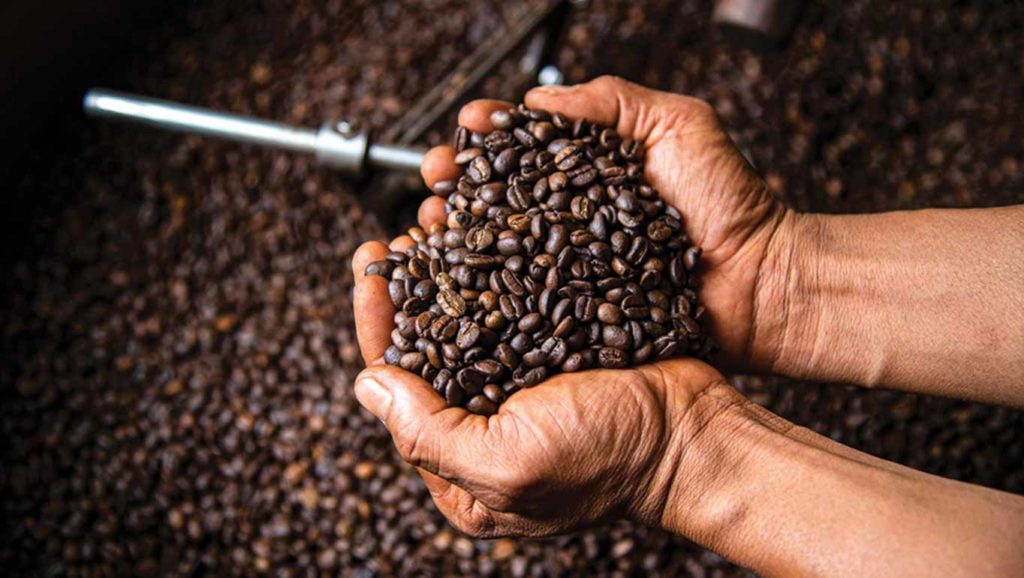It is still unclear how coffee is able to keep its mysteriousness and its allure to this day, being the most popular drink amongst all branches of society. Fashionistas carry it in their trendy mugs, intellectuals use it for inspiration and doctors drink it to stay awake. Coffee has had such a strong influence on our society that even Napoleon Bonoparte’s dying wish was to have a last taste of his favorite coffee.
Where did this magnificent plant come from and how was it able to leave such an imprint on cultures through-out the history?
“Open with a joke”, they say. In this case, just a fact: over 2.25 billion cups of coffee are drunk daily. The reasons can be endless; staying afloat with daily routines or work schedules, or to have a reason to leave the house and see a friend.
Originally from Ethiopia, coffee has been around for over 1000 years. There is a legend that people started to eat the coffee beans in Ethiopia and loved the feeling of excitement they felt right after, and so they decided to make a beverage out of these plants that they could all drink. Another legend says that a cleric from Yemen visited Ethiopia and when he saw how popular the coffee beverage was, he decided to bring it back to his country and introduce it to the Sufis. Sufis used this drink to stay awake for their religious rituals. At one point, the authorities were concerned about the coffee beverage, as they believed it was intoxicating. However, when they carried out tests, they understood that coffee’s effect is quite different to that of alcohol and so it was allowed to spread to the Middle East.
Something even more shocking? Coffee houses were originally a social gathering spot for men. In a way, coffee modernized and revolutionized the traditional custom of living in the Middle East. For the first time, men were able to gather elsewhere besides a mosque.

Turkey was one of the first countries to introduce the coffee house culture. Though coffee houses were once the domain of the Middle Eastern men, in Turkish legend, women had an important role to play in the coffee culture. Throughout the 16th century, coffee fortune telling by women became one of the most famous traditions in Turkey. In Egypt’s Alexandria, coffee was a drink preferred by the intellectuals. Egyptian coffee has a cardamom kick to its taste, as opposed to classic coffee in other regions.
The merchants from Turkey (Ottoman Empire), began taking coffee with them to their European trading ports, such as Venice. European countries were so exhilarated by this new discovery, they could not get enough of it. At that point, since coffee was only cultivated in Yemen, they tried to get a hold of coffee beans from there to try and grow in Europe. By the 1970’s, the Dutch produced one of the biggest plantations of coffee in Java, the capital of Indonesia. By the 18th century, France were the leading producer and consumer of coffee.
The United States had its own interesting affair with coffee. Revolutionaries decided that the English taxes on tea were too high, and so they proposed to switch to coffee in the 1850s. Moreover, during the American Civil War, the soldiers needed coffee to stay awake, and they began to drink instant coffee, ‘Nescafe’, regularly – which is how the popularity of coffee expanded in America. Americans took coffee even further, creating the ever-famous Starbucks in 1987. The popular coffee house expanded to more than 22,000 branches all over the world by 2015.
Finally, while Italy did not discover coffee, they created a coffee machine which boiled the water pushing it through the beans, to create a special kind of coffee called espresso. In doing so, they have created a coffee culture unlike another, claiming this is the best way to consume the beverage.
Coffee houses have since become an intellectual center for poets and artists, where they bounce their ideas with one another. However, the trendy coffee houses we are used to today were quite different back in the day. They were smelly and stuffy, no bigger than a small room. Respectable women would refrain from entering coffee houses, to avoid vulgar conversations. Nonetheless, the popularity of these social gatherings only grew higher.
“Black as hell, strong as death, sweet at love,”- Pasqua Rosee’s words, not ours. He was an eccentric Greek servant of the British merchants, known to make the best coffee in the Ottoman Empire. While we may argue that coffee has impacted society in a negative way, spewing addiction and anxiety amongst other disadvantages – we all have our own personal relationship with it. Each of us has our own story about coffee, being told from generation to generation, influencing us in the most mysterious ways. The verdict? Whether you like it or not, paying tribute to it is inevitable.



